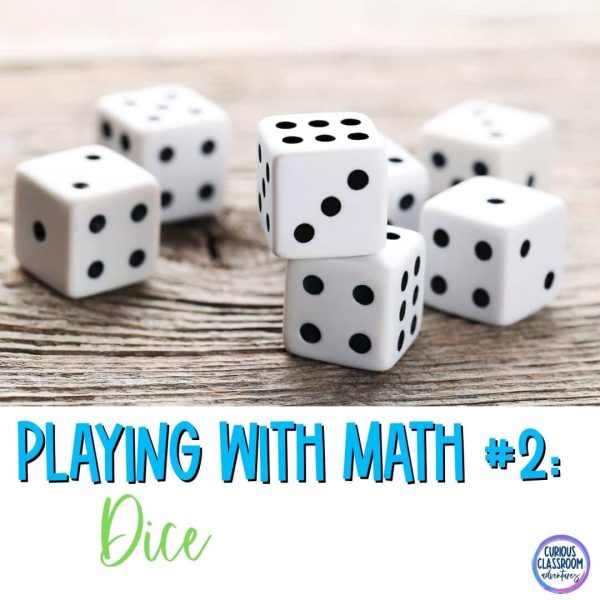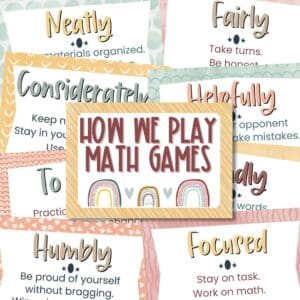Are you looking for new and exciting ways to engage your students in math instruction? Try playing with math concepts by using dice! Dice can add an element of fun to math lessons while still providing meaningful practice and review. Let’s break down a few ideas for playing with math using dice in the classroom, plus a free download of classroom behavior expectations for math games.
Make it a Game
Who said math can’t be fun? Use dice as part of an interactive game to teach various concepts and problem-solving skills. You can modify a popular game like Yahtzee to fit the math skill students need to practice. Personally, I have had a ton of fun designing my own games for playing with math using dice. Here are some of my favorites:
- Place if or Pass it (place value)–FREE DOWNLOAD
- Dropping Totals (2-digit multiplication)
- Missing Dividends (division facts)
- Bigger Berries (comparing fractions)
- High or Low (2-digit multiplication)
- Partial Product Pickle (2-digit multiplication)
- Partial Quotient Pickle (divide by 1-digit)
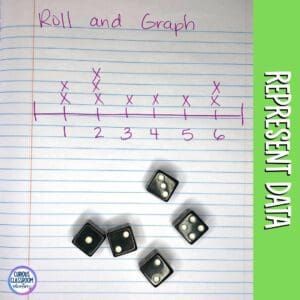
Roll and Graph
Get students playing with math by using a handful of dice and graphing their results on a number line or scatter plot. This is an excellent exercise for learning about probability distributions and understanding how data is represented visually. You can even challenge them by having them calculate the mean based upon their rolls!
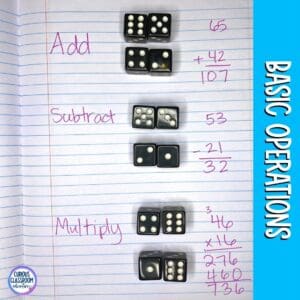
Dice Drills
When your students need extra practice with basic operations dice drills are a great way to get there quickly. Give each student two dice (or have them share). Students should roll both dice at once and then either add, subtract, or multiply the numbers together (depending on what skill you want them to practice).
You can use more dice to create larger numbers. For example, if you want them to practice 2-digit by 1-digit multiplication, give them three dice. When they roll the 3 dice they will use 2 of the dice to create a 2-digit number and then multiply by the number on the third die.
Another extension is to use two different colored dice to practice adding and subtracting integers. Designate one color as positive numbers and the other color as negative numbers. Roll and let students find the sum of the integers.
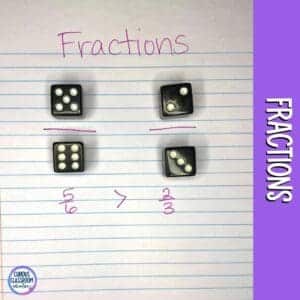
Fractions & Decimals
Dice are also useful for teaching fractions and decimals as you can easily incorporate them into various activities. Start by having students roll dice and use them to create fractions. They can use the created fractions and then make a list of equivalents of the numbers they rolled. Then move on to creating decimal equivalents. Once students get comfortable with this process you can move on to comparing fractions or decimals or other activities that encourage problem-solving skills such as figuring out which fraction is larger or smaller than another fraction using either visual models or number lines!
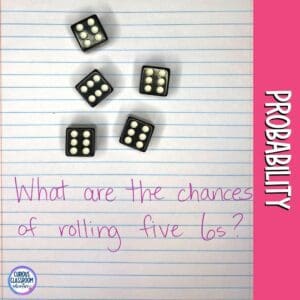
Probability Experiments
Using several dice, have students conduct experiments to figure out probability questions such as “What’s the probability of rolling an even number?” or “What’s the probability of rolling a three?” Experiments like these help students develop an understanding of probability and data analysis concepts, while also being fun & engaging at the same time! Math By All Means: Probability, Grades 3-4 by Marilyn Burns is full of great dice activities for data and probability, and I highly recommend it! (not an affiliate, just a fan).
Dice are such versatile tools when it comes to teaching math; there are so many creative ways to use them in your classroom! From introducing basic operations to practicing fractions, using dice in your instruction is sure to make learning fun for your upper elementary students! Plus, who doesn’t love rolling some good old-fashioned dice?! So go ahead—give it a try today and watch your kids light up with excitement!

